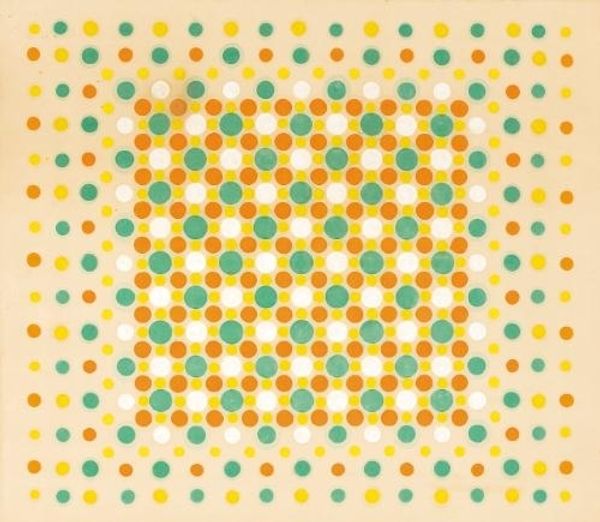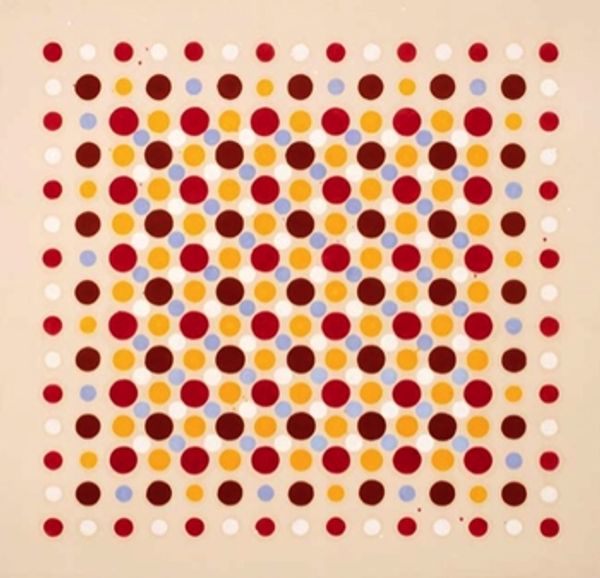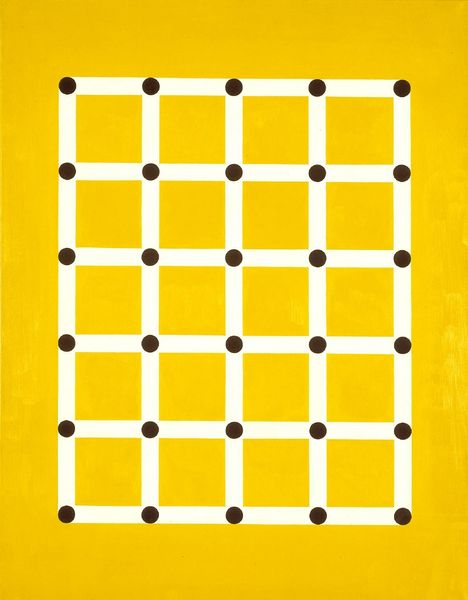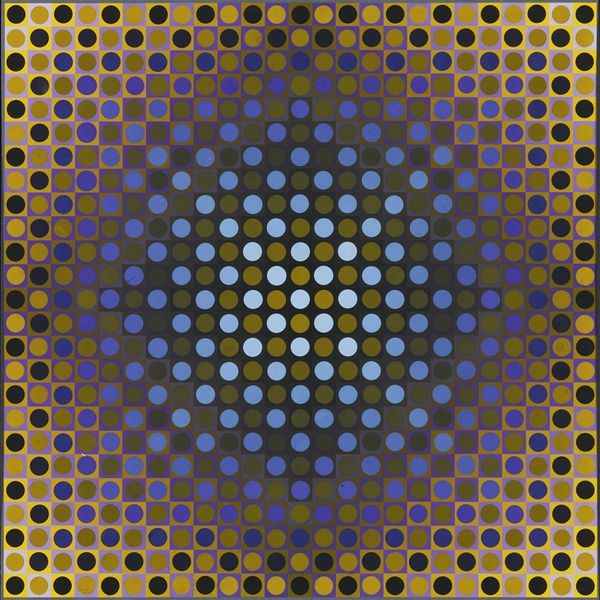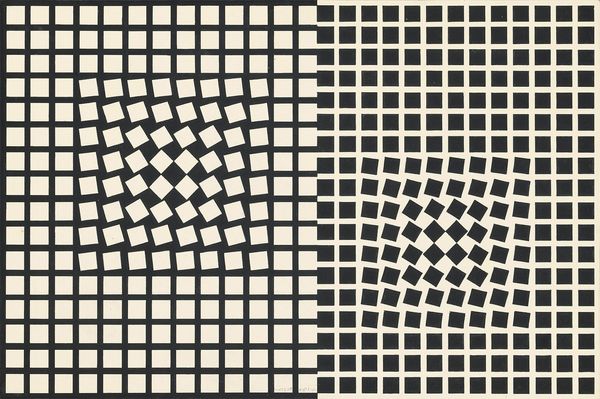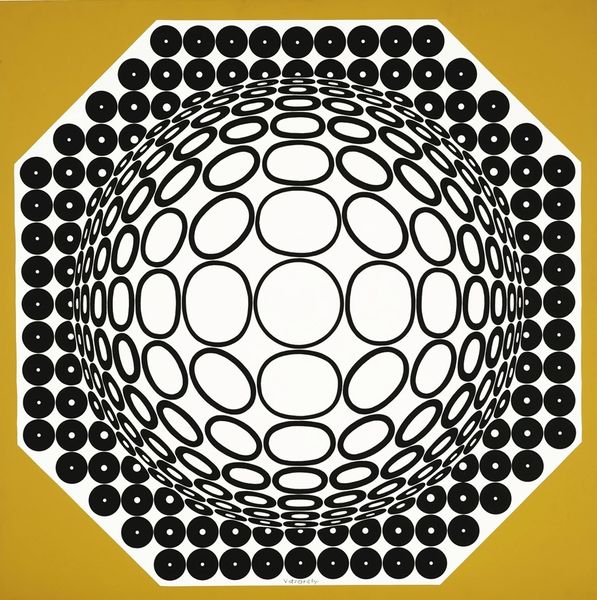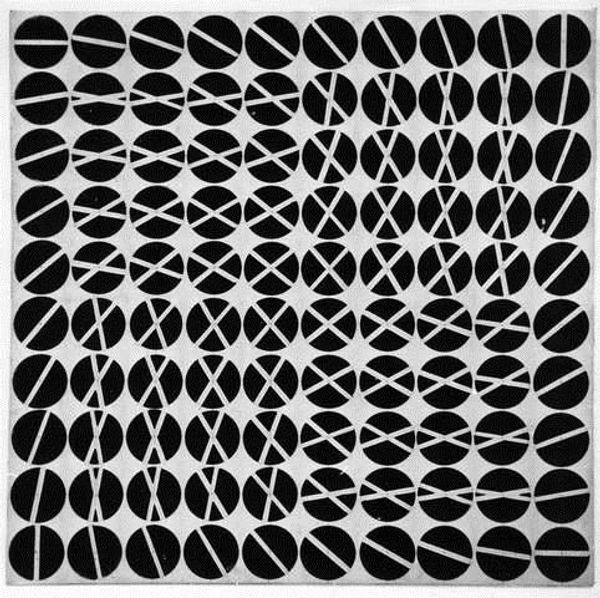
#
circle
#
pattern
#
colour-field-painting
#
geometric pattern
#
repetitive shape and pattern
#
minimal pattern
#
organic pattern
#
geometric
#
geometric-abstraction
#
repetition of pattern
#
vertical pattern
#
abstraction
#
pop-art
#
line
#
pattern repetition
#
layered pattern
#
combined pattern
#
hard-edge-painting
#
repetitive pattern
Copyright: Thomas Downing,Fair Use
Editor: Here we have Thomas Downing's "Rivet Lilt" from 1962, a field of painted circles. There's something quite mesmerizing about the regularity and color choices. What's your take on this work? Curator: It’s important to consider Downing's methods. His use of stencils to create these perfect circles—what does that process tell us? Are these handmade paintings or are they mass produced objects? How does this fit into a larger context of art and manufacturing? Editor: It feels almost… industrial, with that perfect repetition. Curator: Exactly. Think about the socio-economic backdrop of the 1960s: the rise of consumerism, mass production. How does Downing, through the *act* of painting something that resembles something machine-made, challenge those notions or maybe reflect them? What commentary might Downing be making on the labor involved, or perhaps, not involved, in the traditional artmaking? Editor: So it's less about what the painting represents, and more about how it was made and what that making says about the culture it came from? Curator: Precisely. Think about the "materials" here too. It's not just paint and canvas, but also stencils, the tools that enforce uniformity. He is investigating not just making but the act of replicating. And how this relates to industry and consumer culture. Editor: That gives me a new appreciation for it. I was focused on the colors and pattern, but now I see the commentary on labor and mass production. Curator: Thinking about art as a product of material conditions and production processes opens up exciting ways to understand works like this, doesn’t it?
Comments
No comments
Be the first to comment and join the conversation on the ultimate creative platform.
